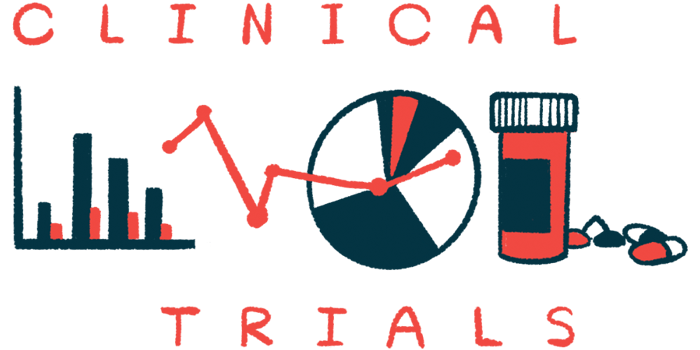Nomlabofusp (CTI-1601) at high dose safely raises frataxin levels
Top-line findings of Phase 2 trial support therapy's safety, potential efficacy

Use of the investigational therapy CTI-1601, now known as nomlabofusp, was associated with dose-dependent increases in levels of frataxin — the protein whose lack causes Friedreich’s ataxia (FA) — in skin and buccal cells of adult patients in a clinical trial.
Treatment tolerability also was reported in top-line data from the Phase 2 dose exploration study (NCT05579691) of nomlabofusp in 28 patients, recently released by the therapy’s developer, Larimar Therapeutics.
An open-label extension (OLE) trial launched in January, and nomlabofusp soon will start being given to all enrolled patients, Larimar stated in a company press release. Interim OLE findings are expected before the year’s end.
Judging treatment efficacy in clinical trial via frataxin levels in FA patient tissues
“Together with the consistent results seen across our Phase 2 and Phase 1 studies, we believe these findings suggest that nomlabofusp can achieve tissue [frataxin] levels that may have a clinically meaningful effect on disease progression in patients with FA,” said Carole Ben-Maimon, MD, president and CEO of Larimar.
Discussions are underway with the U.S. Food and Drug Administration (FDA) as to whether tissue frataxin levels can be used as a surrogate indicator of the therapy’s efficacy.
“The FDA has acknowledged that frataxin deficiency appears to be critical to the pathogenic [disease-driving] mechanism of FA, and that there continues to be an unmet need for treatments for FA patients that address the underlying disease pathophysiology [processes],” Ben-Maimon noted.
The company also plans to open a global and placebo-controlled pivotal clinical trial of nomlabofusp in FA patients, and, potentially, a multiple ascending dose study of the therapy in children, ages 2 to 17, with Friedreich’s ataxia.
Findings from completed trials, the OLE, and possibly the pivotal trial are expected to support an application to the FDA for accelerated approval of nomlabofusp. The regulatory agency can give conditional approval to an investigational treatment based on early evidence of effectiveness, which needs to be confirmed in a separate study.
Larimar plans to apply for nomlabofusp’s accelerated approval in the second half of 2025.
Frataxin levels in skin and buccal cells rose in dose-dependent manner
Nomlabofusp is designed to deliver a functional version of frataxin to patients’ cells when administered via under-the-skin (subcutaneous) injections, helping to ease FA symptoms.
In the Phase 2 trial, 13 adult patients initially were given the investigational therapy at a 25 mg dose or a placebo injection once daily for two weeks, then every other day for two additional weeks.
Top-line results indicated that nomlabofusp boosted frataxin levels in patient cells without any serious side effects, consistent with earlier Phase 1 data.
The FDA then agreed to higher dose testing in 15 additional patients, who were given nomlabofusp at 50 mg or a placebo in the same dosing regimen as the initial group. Regulators also agreed to the OLE study.
Top-line results now indicate that nomlabofusp was associated with dose-dependent frataxin increases in skin and buccal (inside the mouth) cells. Frataxin levels did not increase in either set of tissue samples from placebo group patients.
Specifically, relative to pretreatment (baseline) values in skin cells, nomlabofusp was associated with a median frataxin increase of 2.81 picrograms per microgram (pg/mcg) at the 25 mg dose, and a median increase of 5.57 pg/mcg at the 50 mg dose after two weeks of daily treatment.
For patients in the 50 mg dose group, baseline frataxin levels in skin cells were less than 17% of what’s seen in healthy adults. After two weeks of treatment, their median levels were higher than 33% of healthy average levels.
Although frataxin levels in buccal cells correlated with those reported in skin cells, these levels were more variable. Larimar indicated that this can be attributed to the fact that skin cells are a more stable tissue with a more standardized collection method.
Still, frataxin levels in buccal cells increased by a median of 0.56 pg/mcg and 0.72 pg/mcg at the 25 mg and 50 mg doses, respectively, after two weeks of treatment.
When dosing was switched from every day to every other day, frataxin level somewhat declined, but generally remained above baseline values, the company reported.
Treatment seen as well tolerated, with no serious side effects reported
Nomlabofusp was well tolerated at both doses, with no serious adverse events reported. The most common side effects were mild or moderate injection site reactions. One patient among the study’s 19 treated adults withdrew due to an allergic reaction to nomlabofusp that resolved with standard treatment.
“These promising Phase 2 dose exploration data further expand our nomlabofusp safety database and strengthen clinical support for the generally well tolerated profile and low discontinuation rates seen across studies,” said Russell Clayton, chief medical officer at Larimar.
The FDA placed a partial clinical hold on nomlabofusp’s development program in 2021 due to safety concerns raised in nonhuman primate tests. Additional dose increases in ongoing and future U.S. studies were to be contingent on findings in the Phase 2 trial’s 50 mg group.
FA patients in the OLE, which is open to those who took part in a previous nomlabofusp clinical trial, will be treated daily at the 25 mg dose. This trial will run for more than one year, and patients will either self-administer or have a caregiver administer the therapy at the home.







